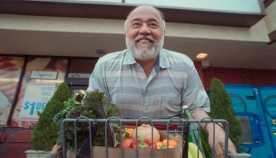About Us


There are several issues relating to employee benefits that may reach the Court in the coming terms. Last year, we wrote that the Court may face residual questions about what constitutes an imprudent action in violation of ERISA and need to further clarify the breach-of-fiduciary-duty pleading standards after Hughes v. Northwestern University, 142 S. Ct. 737 (2022). In Hughes, the Court held that determining whether participants state plausible claims against plan fiduciaries involves a “context specific inquiry” of the fiduciaries’ “duty to monitor all plan investments and to remove any imprudent ones.” Id. at 740 (citing Tibble v. Edison Int’l, 575 U.S. 523, 530 (2015)). As predicted, the “context-specific inquiry” required by the Court has led to a flurry of litigation, as plaintiffs and plan fiduciaries test the contours of what constitutes a plausible claim for violations of the duty of prudence.
Earlier this year, the Seventh Circuit issued a decision reexamining the plaintiffs’ allegations in Hughes, holding that two of the plaintiffs’ claims alleging violations of the duty of prudence were sufficiently plead. 63 F.4th 615 (7th Cir. 2023). The same court, however, affirmed a dismissal of another plaintiff’s claims, notwithstanding Hughes, holding that while Hughes rejected the Seventh Circuit’s assumption that the availability of a mix of high and low-cost investment options insulated plan fiduciaries from liability, it otherwise had no bearing on the court’s analysis. Albert v. Oshkosh Corp., 47 F.4th 570 (7th Cir. 2022).
Further evidence of the issue’s complexity can be found in a recent Sixth Circuit opinion that, citing Hughes, held that the plaintiffs failed to plausibly allege violations of the duty of prudence by merely alleging defendants should have chosen solely index, rather than actively managed, funds. See Smith v. CommonSpirit Health, 37 F.4th 1160, 1166 (6th Cir. 2022) (plaintiffs pointing to the virtues of specific alternative investments may help show imprudence in some cases, but merely alleging the existence of alternative categories is not enough). Shortly thereafter, the Sixth Circuit similarly upheld dismissal of the plaintiffs’ claims concerning overall plan fees and the cost and performance of investments but reversed the district court’s dismissal of claims concerning the availability of different share classes. Forman v. TriHealth, Inc., 40 F.4th 443 (6th Cir. 2022) (stating that “context is often destiny” and relying on cases from the Second, Third, Eighth, and Ninth Circuits to partially reverse).
Another issue that may reach the Court concerns ERISA’s prohibited transactions provision. Section 406(a) of ERISA prohibits plan fiduciaries from engaging in certain transactions with “parties of interest,” which include plan fiduciaries, the employer, employees, and any third-party service providers. The Ninth Circuit recently held that AT&T’s contract with its recordkeeper Fidelity became a prohibited transaction when AT&T failed to consider the millions of dollars in added fees for Fidelity that were generated by one aspect of the arrangement (Fidelity providing plan participants access to its brokerage account platform to consider additional choices). Bugielski v. AT&T Servs., Inc., No. 21-56196, 2023 WL 4986499 (Aug. 4, 2023). The court rejected AT&T's argument that this was an “arm’s length” transaction. Id. at *9-12 (rejecting AT&T’s reliance on Sweda v. Univ. of Penn., 923 F.3d 320 (3rd Cir. 2019) and Albert v. Oshkosh Corp., 47 F.4th 570 (7th Cir. 2022)).

















